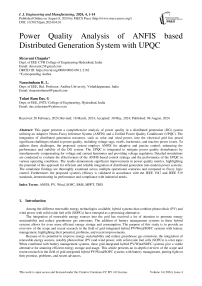Power Quality Analysis of ANFIS based Distributed Generation System with UPQC
Автор: Shravani Chapala, Narasimham R.L., Tulasi Ram Das. G.
Журнал: International Journal of Engineering and Manufacturing @ijem
Статья в выпуске: 4 vol.14, 2024 года.
Бесплатный доступ
This paper presents a comprehensive analysis of power quality in a distributed generation (DG) system utilizing an Adaptive Neuro-Fuzzy Inference System (ANFIS) and a Unified Power Quality Conditioner (UPQC). The integration of distributed generation resources, such as solar and wind power, into the electrical grid has posed significant challenges related to power quality, including voltage sags, swells, harmonics, and reactive power issues. To address these challenges, the proposed system employs ANFIS for adaptive and precise control, enhancing the performance and stability of the DG system. The UPQC is integrated to mitigate power quality disturbances by simultaneously compensating for voltage and current harmonics and providing voltage regulation. Detailed simulations are conducted to evaluate the effectiveness of the ANFIS-based control strategy and the performance of the UPQC in various operating conditions. The results demonstrate significant improvements in power quality metrics, highlighting the potential of this approach for efficient and reliable integration of distributed generation into modern power systems. The simulation findings are thoroughly examined across multiple operational scenarios and compared to Fuzzy logic control. Furthermore, the proposed system's efficacy is validated in accordance with the IEEE 1547 and IEEE 519 standards, demonstrating its performance and compliance with industrial needs.
ANFIS, PV, Wind, SOFC, BMS, MPPT, THD
Короткий адрес: https://sciup.org/15019338
IDR: 15019338 | DOI: 10.5815/ijem.2024.04.01
Текст научной статьи Power Quality Analysis of ANFIS based Distributed Generation System with UPQC
Among the different renewable energy technologies available, hybrid systems that combine photovoltaic (PV) and wind power with solid oxide fuel cells (SOFCs) have emerged as a promising alternative.
The integration of renewable energy sources into the grid has received a lot of attention to promote energy sustainability and reduce greenhouse gas emissions. The addition of battery management systems in these hybrid systems allows for even more efficient energy storage and consumption. The purpose of this study is to provide an overview of the scope and recent research in the field of grid-integrated hybrid PV/Wind/SOFC systems with battery management, highlighting their potential, problems, and recent improvements.
Because of its potential to improve energy sustainability and reduce greenhouse gas emissions, the integration of renewable energy sources, notably photovoltaic (PV) and wind power, with solid oxide fuel cells (SOFCs) is a hot topic. When combined with battery management systems, these grid-integrated hybrid PV/Wind/SOFC systems give a viable alternative for attaining efficient energy storage and usage. This article presents an in-depth overview of the scope and recent research in the field of grid-integrated hybrid PV/Wind/SOFC systems with battery management, putting light on their promise, problems, and recent advances.
The research provides a unique energy management technique for a fuel cell hybrid electric vehicle (FCHEV) that focuses on optimal power sharing, minimizing fuel usage, and minimizing battery power fluctuations [1]. To improve energy efficiency, the technique employs fuzzy logic control, equivalent consumption minimization, and operational mode management.
The integration of artificial intelligence (AI) with hybrid renewable energy systems (HRESs) mixing solar photovoltaic, wind energy, and fuel cells is discussed in this article [2]. It goes through current fuel cell technology and industry developments, as well as AI-based control tactics and recent HRES demonstrations.
The research focuses on employing artificial intelligence (AI) algorithms to diagnose and manage fuel cell devices. It investigates AI-based diagnostic applications and emphasizes the advantages of employing AI for accurate and quick diagnosis [3]. The article examines the use of standard AI approaches in fuel cell diagnostics, such as artificial neural networks, genetic algorithms, particle swarm optimization, and support vector machines. The study presents a hybrid grid-connected system that integrates wind, PV, battery energy storage, fuel cell, and electrolyzes [4]. Controllers for grid connection, power regulation, and energy management are included in the system design. The hybrid system is designed to optimize power extraction, stabilize power supply, and eliminate volatility caused by renewable energy sources.
This paper describes a grid-integrated system that combines photovoltaic (PV), fuel cell, technologies with maximum power point tracking (MPPT) [5]. A voltage-oriented control for the grid-integrated inverter, an integrated CUK converter for peak power extraction from PV modules, and an MPPT approach for quick PV tracking are all part of the system. Based on group technique for data handling neural networks (GMDH-NNs), a control system for voltage and power management in PV/fuel/battery systems is developed [6]. The control system successfully regulates variables such as unknown dynamics, temperature, irradiation, and load fluctuations. To deliver consistent electricity to a load, the study suggests a small-scale hybrid solar and fuel cell system [7]. The project's goal is to assess the performance of hybrid systems made up of PV cells, batteries, hydrogen generators, and fuel cells [8]. The study describes an efficient photovoltaic (PV) production system paired with a multilevel inverter for controlled power delivery. Maximum power point tracking (MPPT) is a technique for increasing PV power generation [9]. The grid-integrated hybrid PV/Wind/SOFC system with a battery management system has enormous promise for long-term energy generation and grid stability. Recent research has shown considerable advances in system optimization, control algorithms, and energy management strategies [10].
Research Objectives of the present paper are: Investigate the specific power quality challenges associated with integrating distributed generation (DG) sources into the electrical grid, including voltage sags, swells, harmonics, and reactive power imbalances, Design and implement an Adaptive Neuro-Fuzzy Inference System (ANFIS) for the precise and adaptive control of the DG system, Assess the effectiveness of ANFIS in enhancing system performance and stability under various operating conditions, Incorporate a Unified Power Quality Conditioner (UPQC) into the DG system to address and mitigate power quality disturbances. Analyze the role of UPQC in compensating for voltage and current harmonics, as well as providing voltage regulation, conduct detailed simulations to evaluate the performance of the ANFIS-based DG system with UPQC. Measure improvements in key power quality metrics, such as Total Harmonic Distortion (THD), voltage stability, and reactive power compensation, Compare the performance of the ANFIS-based control system with conventional power quality improvement methods. Identify the advantages and limitations of the proposed approach in relation to existing technologies, Assess the adaptability of the ANFIS-based DG system to dynamic changes in load and generation conditions. Ensure that the system maintains optimal performance in the face of fluctuating power demands and varying renewable energy outputs, Evaluate the economic viability and practical feasibility of implementing the ANFIS-based UPQC system on a large scale. Consider factors such as cost, scalability, and integration with existing infrastructure.
2. ANFIS based MPPT Algorithm for PV, Wind and SOFC 2.1 PV MPPT
As illustrated in Fig. 1, an ANFIS (Adaptive Neuro-Fuzzy Inference System) based PV (Photovoltaic) MPPT (Maximum Power Point Tracking) system is a control algorithm that combines fuzzy logic and neural network techniques to maximize the performance of photovoltaic systems. Here are some highlights of the ANFIS-based PV MPPT system: The ANFIS-based PV MPPT system optimizes power extraction from solar systems by leveraging the capabilities of fuzzy logic and neural networks. It has higher efficiency, greater adaptability to changing conditions, and higher stability, making it a potential control algorithm for maximizing energy generation from PV panels [11].
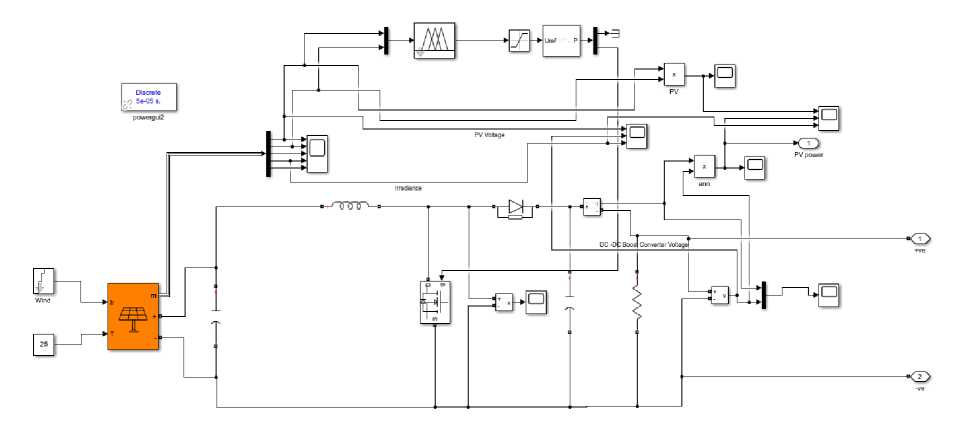
Fig. 1. ANFIS based PV MPPT Simulation model.

Fig. 2. ANFIS PM MPPT Structure

Fig. 3. ANFIS Based PV MPPT output waveform.
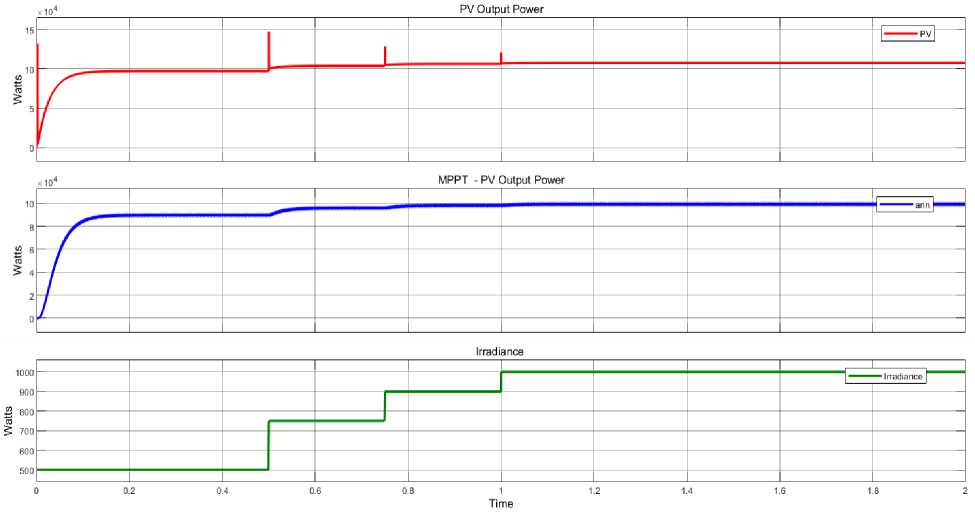
Fig. 4. ANFIS Based PV MPPT with and without power waveform under various irradiance.
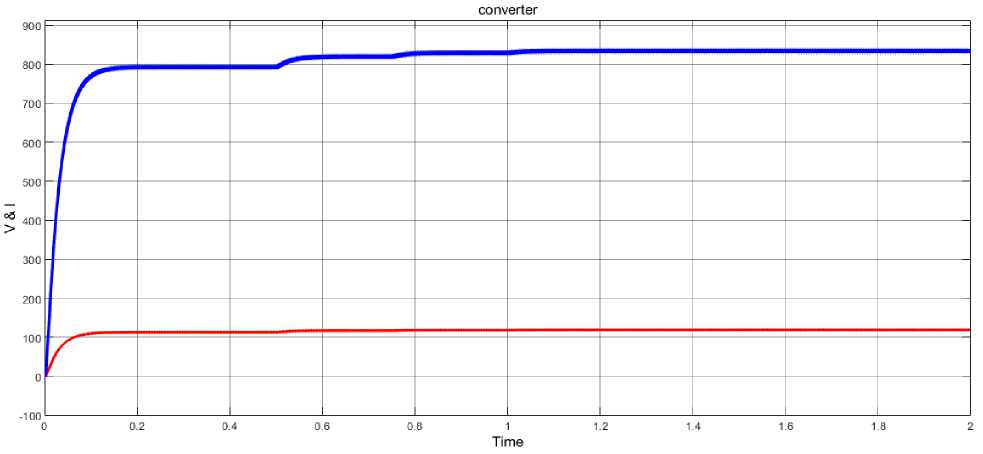
Fig. 5. ANFIS Based PV MPPT converter output voltage and current.
The proposed algorithm was developed, and the usefulness of the algorithm was demonstrated by experimental analysis. Fig. 3 depicts the power waveform obtained from the PV system, demonstrating the performance of the ANFIS MPPT algorithm. Furthermore, Fig. 4 depicts a comparison of PV power and MPPT PV power under various irradiance levels. This comparison sheds light on the accuracy and efficiency of the ANFIS-based MPPT algorithm in a variety of environmental circumstances. The findings show that the proposed algorithm effectively tracks the maximum power point, ensuring optimal power generation even when irradiance levels change. Overall, the research reported here demonstrates the successful implementation of the ANFIS MPPT algorithm in a PV system. Furthermore, the voltage and current waveforms shown in Fig. 5 provide useful information about the operation of the boost converter inside the PV system.
-
2.2 Wind MPPT
Fig. 6 depicts a novel implementation of the Adaptive Neuro-Fuzzy Inference System Maximum Power Point Tracking (ANFIS MPPT) algorithm specifically tailored for a wind energy system. Fig. 7 depicts the ANFIS structure, which is required for the MPPT process and demonstrates its complexity and potential for optimizing power generation in the wind system. Fig. 8 depicts the output power waveform, which allows for a thorough examination of the system's performance and efficiency. This waveform reveals how efficiently the ANFIS MPPT algorithm allows the wind energy system to reach and retain its maximum power point, hence improving overall energy capture.
ANFIS control Based MPPT Techniques for 30 KWatts Wind Power System

Fig. 6. ANFIS based Wind MPPT Simulation model

Fig. 7. ANFIS based Wind MPPT structure
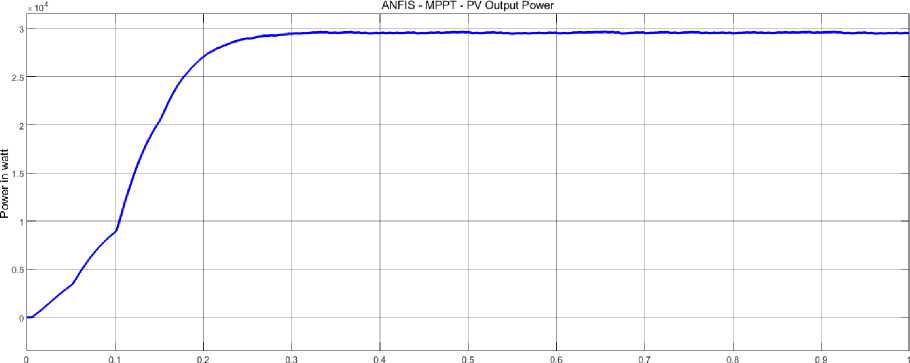
Time
Fig. 8. ANFIS based Wind MPPT output power waveform under various wind speed
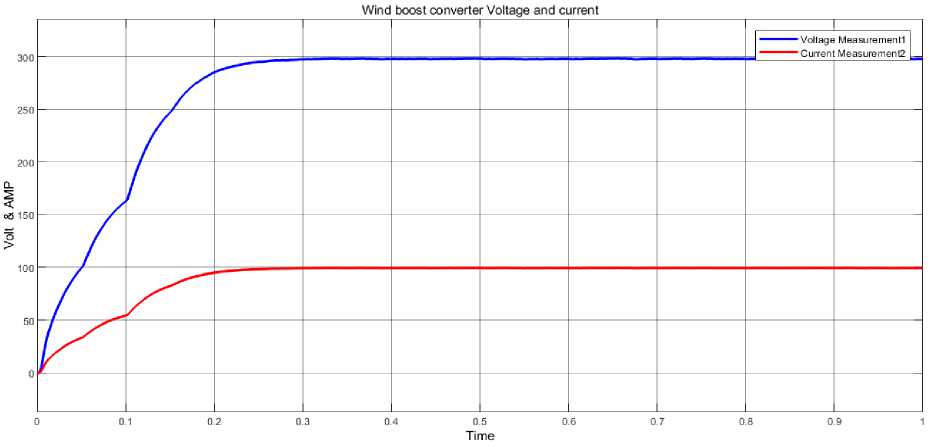
Fig. 9. ANFIS based Wind converter voltage and current waveform

Time
Fig. 10. Comparison of with and without MPPT of Wind power system
Fig. 9 shows the boost converter's voltage and current waveforms in addition to the output power waveform. The boost converter is an important component of the wind energy system since it allows for voltage management and energy conversion. Researchers can acquire a full understanding of the boost converter's behavior and efficiency during the MPPT process by analyzing these waveforms. Fig. 10 is important in the research since it shows a comparison between wind power and MPPT wind power at different wind speeds. This comprehensive comparison provides useful information on how well the ANFIS MPPT algorithm performs in various wind conditions.
-
2.3 SOFC Mppt
As illustrated in Fig. 11, this brief paper gives an overview of an Adaptive Neuro-Fuzzy Inference System (ANFIS)-based Maximum Power Point Tracking (MPPT) system specifically designed for Solid Oxide Fuel Cells (SOFCs). This system's goal is to maximize SOFC power generation efficiency by continually tracking and extracting maximum power from the fuel cell stack [12].
The ANFIS-based MPPT system is a revolutionary solution that combines ANFIS's adaptive and intelligent capabilities with the exact tracking of SOFCs' Maximum Power Point (MPP), as illustrated in Fig. 12 ANFIS is a hybrid computational model that combines the learning capabilities of ANNs with the language interpretability of Fuzzy Logic Systems (FLS). This integration enables the system to alter its parameters adaptively based on real-time operating conditions and forecast the ideal MPP for the SOFC system [13].
Furthermore, efforts have been made to integrate advanced control methods, such as fuzzy logic-based load balancing and state estimation, to improve the SOFC system's performance and stability [14]. Ongoing research and developments in ANFIS-based MPPT systems for SOFCs aim to further optimize performance, stability, and control techniques, eventually leading to SOFCs' wider adoption as a clean and efficient energy generating technology [15].
The proposed ANFIS MPPT algorithm has been implemented and applied to a SOFC (Solid Oxide Fuel Cell) energy system with success. The output power waveform, shown in Fig. 13, is used to evaluate the system's performance and the impact of the ANFIS MPPT algorithm on power generation. This waveform provides critical insights into the system's dynamic behavior and enables the assessment of its efficiency and stability. Fig.14 also depicts the voltage and current waveforms of the boost converter, a critical component in the SOFC energy system. These waveforms demonstrate the converter's operational features as well as its ability to regulate and control power flow in the system.

Fig. 11. ANFIS Based SOFC MPPT simulation model.
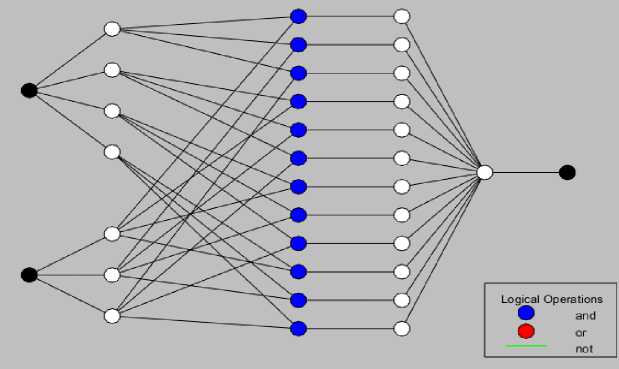
Fig. 12. ANFIS Based SOFC MPPT structure

Fig. 13. ANFIS Based SOFC MPPT power waveform

Fig. 14. ANFIS Based SOFC MPPT converter voltage and current
3. ANFIS based Battery Management System
This brief article provides an overview of a battery management system (BMS) based on an Adaptive Neuro-Fuzzy Inference System (ANFIS) built for hybrid PV/Wind/SOFC systems. To achieve effective energy storage and usage, the integration of different renewable energy sources with solid oxide fuel cells (SOFCs) necessitates an efficient BMS. As a hybrid intelligent technology, ANFIS offers a potential strategy for improving BMS performance and reliability. This research covers the essential features and benefits of the ANFIS-based BMS and analyses its possible implications for increasing hybrid energy system overall efficiency and stability.
Photovoltaic (PV) and wind power integration with solid oxide fuel cells (SOFCs) in hybrid energy systems has received a lot of interest. However, the intermittent nature of renewable energy sources, as well as fluctuating power demand, provides obstacles for efficient energy storage and utilization. Battery management systems (BMS) are critical for maximizing energy storage and balancing power flow in these systems. The application of the Adaptive Neuro-Fuzzy Inference System (ANFIS) as a decision-making tool in BMS is a novel way to address these difficulties.
To provide accurate decision-making skills for energy storage management, the ANFIS-based BMS harnesses the strengths of fuzzy logic and neural networks. ANFIS can learn and simulate complicated interactions between inputs including battery state of charge (SOC), PV and wind power generation, load demand, and environmental factors in an adaptive manner. The ANFIS-based BMS can optimize battery charging and discharging techniques by integrating realtime data and historical patterns, boosting energy efficiency and system stability.
The ANFIS-based BMS is an excellent solution for managing batteries in hybrid PV/Wind/SOFC systems. Because of its adaptive decision-making skills, increased energy efficiency, and stable system operation, it is a promising solution for optimizing energy storage and usage. Continued research and development in this field will help to advance and apply ANFIS-based BMS, enhancing the overall performance and reliability of hybrid energy systems.
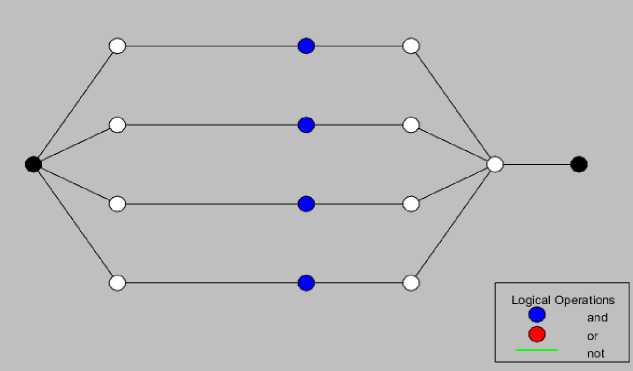
Fig. 15. ANFIS Based Battery Management system structure

Fig. 16. ANFIS Based Battery Management system under various load condition
The ANFIS BMS (Adaptive Neuro-Fuzzy Inference System Battery Management System) method, which stands for Adaptive Neuro-Fuzzy Inference System Battery Management System, has been successfully applied in a hybrid PV/Wind/SOFC (Photovoltaic/Wind/Solid Oxide Fuel Cell) energy system. Fig. 15 depicts the system's construction, which demonstrates the integration of these renewable energy sources and the solid oxide fuel cell. Fig. 16 provides useful insights into the battery's state of charge (SoC) and state of discharge (SoD) under various operating situations for evaluating the performance of the ANFIS BMS algorithm. Researchers and engineers can use this data to monitor and assess the battery's performance and behavior in real-world circumstances. They can acquire a better knowledge of the system's energy management and the efficiency of the ANFIS BMS algorithm in improving the battery's operation by inspecting the battery's SoC and SoD levels.
The hybrid PV/Wind/SOFC energy system is a cost-effective and environmentally friendly way to harvest renewable energy from numerous sources. By intelligently controlling the charging and discharging processes of the battery, the ANFIS BMS algorithm improves the system's overall performance and dependability. This method allows for the efficient use of available energy sources, optimizing energy conversion and reducing energy losses.
Fig. 16 shows the results, which are useful for researchers and system designers looking to optimize the performance of hybrid energy systems. They may fine-tune the ANFIS BMS algorithm and improve its performance by studying the battery's behavior under different operating conditions, resulting in better energy efficiency, increased battery lifespan, and a more sustainable energy system overall.
4. Microgrid Integration with UPQC
Fig. 17 shows a MATLAB simulation of an Adaptive Neuro-Fuzzy Inference System (ANFIS)-based grid integration of a hybrid Photovoltaic (PV)/Wind/Solid Oxide Fuel Cell (SOFC) system with a Battery Management System (BMS). The goal is to look at the feasibility and performance of the ANFIS controller when it comes to optimizing power flow and controlling energy storage in a hybrid system. The simulation comprises PV, wind, SOFC, and battery component modelling and integration, as well as the ANFIS controller. The findings show that the ANFIS controller is successful at ensuring efficient grid integration and consistent power supply, showing its potential for improving the performance of hybrid renewable energy systems.
Benefits of Integrating ANFIS with UPQC are Faster adaptation to power quality disturbances, better identification and correction of power quality issues, continuous learning and adjustment lead to optimal operation. By integrating ANFIS, the UPQC system can anticipate power quality issues and take corrective actions faster, continuously improve control algorithms based on real-time data and handle a wide range of power quality disturbances more effectively.
The successful implementation of an ANFIS-based grid integration control method in a hybrid PV/Wind/SOFC system with a BMS demonstrates its potential to improve the performance and reliability of renewable energy systems. Because ANFIS is adaptive, it can adjust to changing system conditions and optimize power flow accordingly. This helps to increase energy efficiency, reduce dependency on traditional energy sources, and create a more sustainable energy future. The MATLAB simulation of an ANFIS-based grid integration of a hybrid PV/Wind/SOFC system with a BMS shows the ANFIS controller's effectiveness in optimizing power flow, controlling energy storage, and assuring grid stability. The findings suggest that ANFIS has the potential to be a feasible control method for improving the performance and reliability of hybrid renewable energy systems. More study and testing are needed to validate the simulation results and investigate other control mechanisms for improved grid integration in hybrid systems.
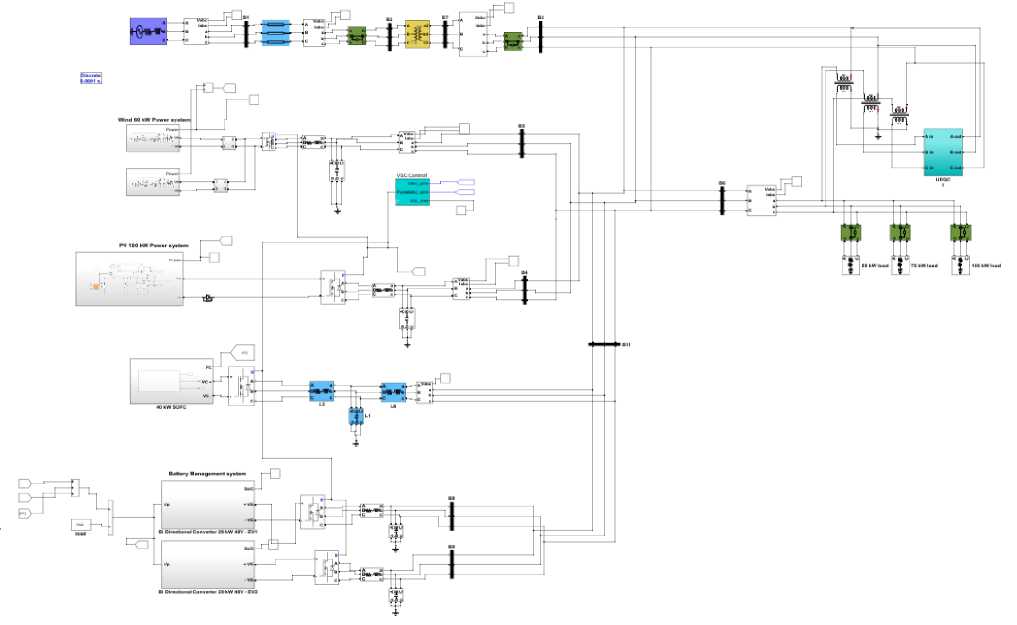
Fig. 17. ANFIS based grid integration of hybrid PV/Wind/SOFC with battery management system simulation model.
Potential Limitations and future contributions are Scalability and Complexity, Real-time Implementation, Adaptability to Dynamic Changes, Integration with Existing Infrastructure and Economic and Feasibility Considerations The implementation of ANFIS-based control in a distributed generation system can become computationally intensive as the size of the system increases. The complexity of the ANFIS model might limit its scalability for larger networks. To address this, future research could focus on optimizing the ANFIS algorithm to reduce computational overhead. This might involve developing more efficient training algorithms or leveraging machine learning techniques like reinforcement learning to dynamically adjust the model's complexity based on the system's requirements. The real-time execution of ANFIS algorithms in practical power systems may face challenges due to latency and processing power constraints, potentially affecting the responsiveness of the UPQC. Investigating the use of advanced hardware solutions, such as Field-Programmable Gate Arrays (FPGAs) or Graphics Processing Units (GPUs), could enhance real-time performance. Additionally, developing hybrid models that combine ANFIS with other

Fig. 18. UPQC system simulation model in Matlab.
faster control techniques might provide a balanced solution. While ANFIS is designed to be adaptive, sudden, and significant changes in the power system's operating conditions may still pose a challenge, affecting the stability and accuracy of the system. Future studies could explore the integration of predictive analytics and real-time monitoring systems to provide the ANFIS controller with anticipatory data, allowing it to preemptively adjust to expected changes. Enhanced data acquisition and preprocessing methods could also improve the system's adaptability. Integrating the proposed system with existing power grids and infrastructure can be challenging due to compatibility issues and the need for extensive modifications. Developing standardized interfaces and protocols for easier integration with existing systems will be crucial. Additionally, pilot projects and phased implementations can help identify and mitigate integration challenges in a controlled manner.
The ANFIS BMS (Adaptive Neuro-Fuzzy Inference System Battery Management System) algorithm was developed and used to integrate a hybrid PV/Wind/SOFC (Photovoltaic/Wind/Solid Oxide Fuel Cell) energy system into a microgrid. The proper integration of these renewable energy sources into the microgrid is critical for reliable and long-term power supply.
The voltage and current waveforms on the load side are evaluated under various operating situations to evaluate the performance of the proposed ANFIS-based microgrid system, as shown in Fig. 19. These waveforms provide important information about the stability and quality of electricity delivered to the microgrid's loads.
Furthermore, the proposed ANFIS-based microgrid system's voltage and current Total Harmonic Distortion (THD) waveforms are shown in Figures 20 and 21, respectively, to assess overall system performance in terms of harmonic distortion. These waveforms enable researchers to measure the system's efficiency and conformance to power quality requirements by allowing for a detailed examination of the system's harmonic content.

Fig. 19. ANFIS based grid integration of hybrid PV/Wind/SOFC with battery management system Voltage and Current waveform under various operating conditions

Fig. 20. Microgrid load side Voltage THD
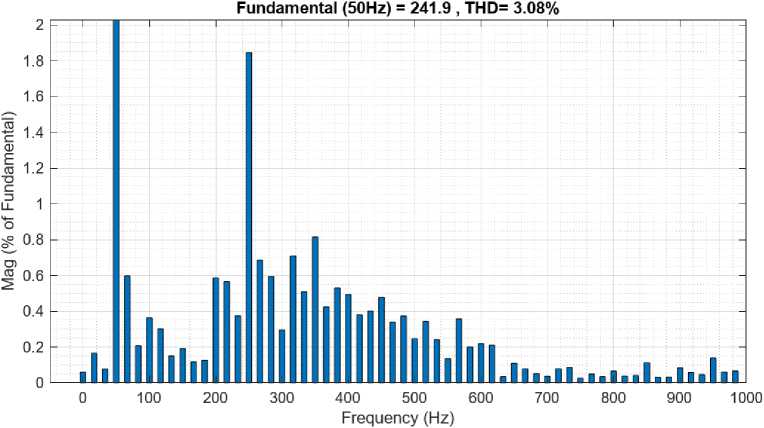
Fig. 21. Microgrid load side Current THD
Table 1 compares the THD values of the proposed system and an existing fuzzy controller to offer a full evaluation of the proposed ANFIS controller's performance. This comparison is used to evaluate the ANFIS controller's advantages in terms of harmonic reduction and overall system performance. According to the comparison results, the ANFIS controller is suggested for the microgrid system due to its superior performance in reducing harmonics and guaranteeing excellent power quality.
Table 1. Comparison of Fuzzy and ANFIS
|
Parameter |
Fuzzy |
ANFIS |
|
Voltage THD |
3.77% |
3.02% |
|
Current THD |
13.18% |
3.08 % |
Future trends in power quality management include Advanced Machine Learning Integration: The integration of more sophisticated machine learning algorithms with ANFIS can enhance the adaptive capabilities and predictive accuracy of power quality management systems. Techniques such as deep learning and reinforcement learning could be used to optimize control strategies dynamically in real-time. Internet of Things (IoT) and Smart Grid, Edge and Cloud Computing, Integration with Renewable Energy Sources, Cybersecurity Measures, Hybrid Energy Storage Systems, Regulatory and Standardization Developments, Cost Reduction and Economic Viability, Sustainable and Green Technologies.
5. Conclusion
In this paper, a Matlab simulation investigates the grid integration of a hybrid photovoltaic (PV)/wind/solid oxide fuel cell (SOFC) system with a battery management system (BMS) using the Adaptive Neuro-Fuzzy Inference System (ANFIS) approach. The results of the Matlab simulation demonstrated the potential and effectiveness of the ANFIS-based grid integration approach for the hybrid PV/wind/SOFC system with BMS. The simulation highlighted several key advantages of the integrated system. Firstly, the complementary power generation profiles of PV and wind technologies, combined with the continuous power supply from the SOFC, resulted in enhanced system reliability and overall power generation. Secondly, the inclusion of the BMS facilitated efficient energy storage and utilization, contributing to improved system efficiency and grid stability. Furthermore, the ANFIS-based control algorithm proved to be effective in optimizing power flow, managing energy storage, and mitigating grid disturbances. Despite the promising results, there are a few challenges that need to be addressed in future research. These include further optimizing the system design, exploring advanced control algorithms, and investigating new energy storage technologies to enhance the overall performance and reliability of the integrated system. In conclusion, the Matlab simulation demonstrated the feasibility and effectiveness of the ANFIS-based grid integration of a hybrid PV/wind/SOFC system with BMS. The integration of these technologies offers significant potential for sustainable energy generation and grid stability. Continued research and development efforts in this area will contribute to the successful implementation and widespread adoption of hybrid renewable energy systems, driving the transition towards a clean and sustainable energy future.
Список литературы Power Quality Analysis of ANFIS based Distributed Generation System with UPQC
- H. F. Gharibeh, A. S. Yazdankhah, M. R. Azizian and M. Farrokhifar, "Online Energy Management Strategy for Fuel Cell Hybrid Electric Vehicles With Installed PV on Roof," in IEEE Transactions on Industry Applications, vol. 57, no. 3, pp. 2859-2869, May-June 2021, doi: 10.1109/TIA.2021.3061323.
- Amani Al-Othman, Muhammad Tawalbeh, Remston Martis, Salam Dhou, Mehmet Orhan, Muhammad Qasim, Abdul Ghani Olabi, Artificial intelligence and numerical models in hybrid renewable energy systems with fuel cells: Advances and prospects,Energy Conversion and Management,Volume 253, 2022,
- Kishore, S.C.; Perumal, S.; Atchudan, R.; Alagan, M.; Sundramoorthy, A.K.; Lee, Y.R. A Critical Review on Artificial Intelligence for Fuel Cell Diagnosis. Catalysts 2022, 12, 743.
- M. M. Gulzar, A. Iqbal, D. Sibtain and M. Khalid, "An Innovative Converterless Solar PV Control Strategy for a Grid Connected Hybrid PV/Wind/Fuel-Cell System Coupled With Battery Energy Storage," in IEEE Access, vol. 11, pp. 23245-23259, 2023, doi: 10.1109/ACCESS.2023.3252891.
- S. Padmanaban, N. Priyadarshi, M. S. Bhaskar, J. B. Holm-Nielsen, E. Hossain and F. Azam, "A Hybrid Photovoltaic-Fuel Cell for Grid Integration With Jaya-Based Maximum Power Point Tracking: Experimental Performance Evaluation," in IEEE Access, vol. 7, pp. 82978-82990, 2019, doi: 10.1109/ACCESS.2019.2924264.
- S. S. Band, A. Mohammadzadeh, P. Csiba, A. Mosavi and A. R. Varkonyi-Koczy, "Voltage Regulation for Photovoltaics-Battery-Fuel Systems Using Adaptive Group Method of Data Handling Neural Networks (GMDH-NN)," in IEEE Access, vol. 8, pp. 213748-213757, 2020, doi: 10.1109/ACCESS.2020.3037134.
- A. Alankrita, S. K. Srivastava, A. Kumar Pandey and S. K. Gupta, "Analysis of Hybrid PV-Fuel Cell System for Load Power Flow Control," 2020 International Conference on Power Electronics & IoT Applications in Renewable Energy and its Control (PARC), Mathura, India, 2020, pp. 267-271, doi: 10.1109/PARC49193.2020.236605.
- O. Khurshid, S. Saher and A. Qamar, "Power Generation by Hybrid Approach Solar PV/battery Power/hydrogen Generation/fuel Cell," 2019 International Conference on Electrical, Communication, and Computer Engineering (ICECCE), Swat, Pakistan, 2019, pp. 1-4, doi: 10.1109/ICECCE47252.2019.8940771.
- S. S. Yadav and K. S. Sandhu, "A Five –level PWM Inverter for Hybrid PV/Fuel Cell/Battery Standalone power System," 2018 IEEE International Students' Conference on Electrical, Electronics and Computer Science (SCEECS), Bhopal, India, 2018, pp. 1-6, doi: 10.1109/SCEECS.2018.8546859.
- R. Indumathi et al, "Comparative analysis of hybrid intelligent controller based MPPT of fuel cell power system," 2017 IEEE International Conference on Smart Technologies and Management for Computing, Communication, Controls, Energy and Materials (ICSTM), Chennai, India, 2017, pp. 155-159.
- G. Sarathkumar et al. "Intelligent control based MPPT method for fuel cell power system," 2013 International Conference on Renewable Energy and Sustainable Energy (ICRESE), Coimbatore, India, 2013, pp. 253-257.
- S. A. Lakshmanan et al, "Analysis and Design of Lead-Lag Controller and Fuzzy Logic Controller for Boost Converter Applicable to RES," 2020 International Conference on Power, Energy, Control and Transmission Systems (ICPECTS), Chennai, India, 2020, pp. 1-6.
- N. S. Rodkin, G. K. Solovov, K. V. Kryukov, M. G. Kiselev and N. N. Baranov, "Control Algorithm For Hybrid PV-Fuel Cell Energy System," 2022 4th International Youth Conference on Radio Electronics, Electrical and Power Engineering (REEPE), Moscow, Russian Federation, 2022, pp. 1-6, doi:
- T. E. Rao, S. Elango and G. G. Swamy, "Power Management Strategy Between PV-Wind-fuel Hybrid System," 2021 7th International Conference on Electrical Energy Systems (ICEES), Chennai, India, 2021, pp. 101-107, doi: 10.1109/ICEES51510.2021.9383706.
- C. Ghenai, I. Al-Ani, F. Khalifeh, T. Alamaari and A. K. Hamid, "Design of Solar PV/Fuel Cell/Diesel Generator Energy System for Dubai Ferry," 2019 Advances in Science and Engineering Technology International Conferences (ASET), Dubai, United Arab Emirates, 2019, pp. 1-5, doi: 10.1109/ICASET.2019.8714292.

